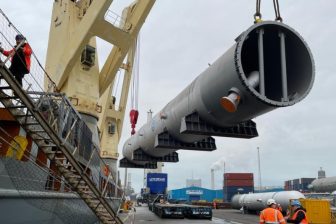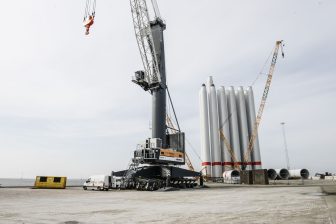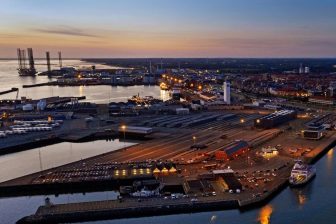
Port of Bilbao strengthens cooperation with the Great Lakes and the St. Lawrence Seaway
The Port Authority of Bilbao and Great Lakes and the St. Lawrence Seaway (USA) have agreed to strengthen cooperation. Under the Memorandum of Understanding, the two ports will work on developing trade relations, and pool knowledge and know-how, particularly in areas such as sustainability, connectivity and innovation.
The signatories to the agreement were Andima Ormaetxe, Operations, Commercial, Logistics and Strategy Director of the Port Authority of Bilbao, and Adam Tindall-Schlicht, Administrator of the Great Lakes St. Lawrence Seaway Development Corporation, on behalf of the American delegation.
During the meeting, Bilbao’s port community familiarized themselves with the characteristics and international trade potential of the Great Lakes and its ports, particularly for trade with the central and eastern coasts of the United States. In turn, UniportBilbao, the port’s industry cluster focused on promoting competitiveness, highlighted Bilbao’s multimodal services and the port community’s capacity to handle all types of cargo transport and logistics needs. The American delegation also enjoyed a guided tour of the Port of Bilbao and its facilities.
The Great Lakes-St. Lawrence Seaway System, a vital waterway spanning 3,700 kilometers between the U.S. and Canada, connects the Atlantic Ocean to the Great Lakes. It represents a major continental trade route, transporting over 200 million tonnes of goods annually. Key commodities include iron ore, coal, limestone, grain, general cargo, steel products, heavy machinery, cement, salt, and stone aggregates.
The Port of Bilbao already maintains trade links with the Great Lakes region, exchanging nearly 90,000 tonnes of goods in 2023. This traffic primarily consists of iron and steel products, machinery and spare parts, chemical products, beverages, other minerals, construction materials, and foodstuffs.
This MoU signifies a commitment to explore further collaboration and development of trade relations between the two regions.
You just read one of our premium articles free of charge
Register now to keep reading premium articles.




